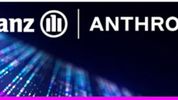How the No-Code Proof of Concept is cutting cost, hassle and delay for insurers
81% of 250 technology buyers from the insurance industry answered 'game changing' in Instech London's Live Chat last week. Watch it here
It's well worth watching Robin Merttens host panellists Farooq Sheikh from Unqork, Adrian Webb from 360Globalnet and Dan Cole from Oliver Wyman discuss No-Code.
Cole stated No-Code platforms are a challenger to the gorillas in the Core System Platform incumbents and are upsetting the status quo. Why?
No-Code enables insurers to react quickly, and even anticipate, change. Change that is often thrust on them and from which they cannot duck. Travel cancellation claim surge as lockdown hit, business interruption claims spiralling from three a day to hundreds and thousands.
Claims management systems that creaked at the seams as work-from-home was implemented and eFNOL became a necessity in days and weeks rather than months and months.
No-Code solves business problems and allows insurers to move quickly and up clock speed
No-Code answers the inherent weakness of current core systems- legacy code.
The moment you introduce scripting and coding you introduce legacy. And that means more and more effort has to go into just maintaining core systems rather than improving them. Wasted effort, time, resources and money.
No-Code platforms like Unqork and 360SiteVieware constantly maintained and upgraded with every customer always on the latest version meaning that NO LEGACY is being generated .
Think about that the next time your platform vendor takes months and charges you millions to upgrade.
There must be downsides surely? The last thing an insurer wants to do is throw away core systems which still stand on the balance sheet.
No worry- No-Code platforms come with the API architecture to integrate with core systems and, in effect, wrap around them to deliver digital transformation of policy admin, end-to-end claims management , payments and so on.
Insurers can chose a time of their choosing to replace parts or eventually all of these systems and still deliver transformation, innovation and an iterative approach to constant improvement.
Central IT are happy because they are saved the horrendous task of trying to prioritise between maintaining recalcitrant core systems and technology stacks and deal with the innovation requests of the business at the same time. Webb described the insurer he worked for having 100 plus projects on the IT 'TO DO' lists.
In reality the CEO described anything from 21 onward the 'pit of despair' with hopeful internal customers unable to bridge the gap.
Central IT gain as much as line of business leaders. As custodians of the insurers IT estate they can ensure any No-Code software meets the compliance, security, scalability and performance needs of the enterprise and know No-Code frees up IT resources for other innovation projects they can rarely get around to.
Finally, the real impetus to change and No-Code is the consumer. They have tasted managing their lives, services, buying, lifestyles and businesses from their phone. Insurers have to digitally transform across all products and parts of the business.
They cannot sustain the tens and even hundreds of millions of £,$, € on new upgrades and new versions of core systems.
Pay-as-you go licensing that usually starts with explicit problems that just have to be addressed urgently in weeks are suddenly found equally suitable for widespread adoption. And these other issues are similarly solved quickly from POC in one week to three months and then rapid adoption.
Ah hang on! Surely there are training and change management issues to address.
Well no- both Unqork and 360Globalnet will train the whole business within two weeks. This is helped by all innovation, customisation, iteration being managed by these trained users in native language. No coding of course.
360Globalnet and Unqork have removed all the barriers to entry opening up the chance for insurers to delight customers, collapse costs and motive staff.
Game Changer it is then.
No-code allows very rapid build and deployment of POCs because there are no IT development queues or costs to hold them back. Practitioners within the business – usually within claims teams – can easily map and configure what they want to test and bring it to life within weeks rather than months. Amendments along the way can then be made and deployed in hours to improve performance. Joining the back of the IT priority queue becomes a thing of the past.









